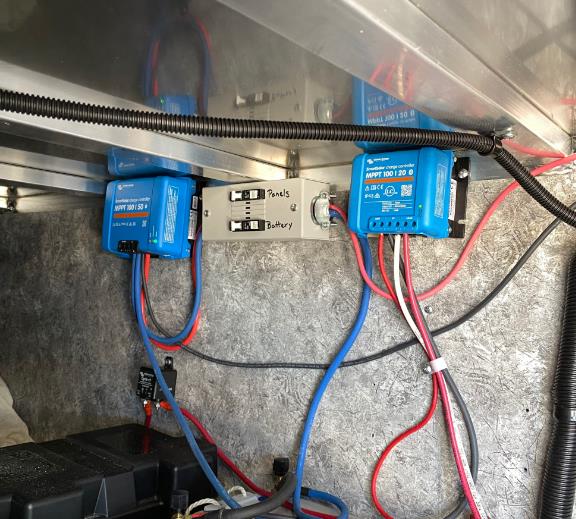Is It Possible to Use Two Charge Controllers with One Solar Panel?
The concept of connecting two charge controllers to a single solar panel is intriguing and raises questions about its feasibility and practicality. While unconventional, there are scenarios where such a setup might be considered. This article explores the possibilities, benefits, and considerations of employing two charge controllers with one solar panel.

Understanding Charge Controllers
Charge controllers play a crucial role in solar energy systems by regulating the voltage and current flowing from the solar panels to the battery. They protect batteries from overcharging, ensure optimal charge, and can significantly extend the battery's life.
Why Consider Two Charge Controllers?
The idea of using two charge controllers with one solar panel might arise in situations where there's a need to charge different battery banks with distinct characteristics or requirements, such as different voltages or battery types (e.g., lead-acid vs. lithium-ion). Another scenario could involve utilizing one controller for a primary battery bank and another for a secondary system or backup.
Feasibility and Configuration
Direct Parallel Connection: Technically, it is possible to connect two charge controllers in parallel to a single solar panel. However, this setup requires precise coordination between the controllers to prevent interference and ensure that both can operate efficiently without compromising the solar panel's performance or damaging the controllers.
Splitter Devices: A more practical approach involves using a power splitter or DC combiner box from the solar panel, allowing the panel's output to be divided and fed into two separate charge controllers. This method ensures that each controller receives a portion of the power generated by the panel, reducing the risk of interference.
Considerations and Limitations
- Compatibility: Ensure that the solar panel can provide enough power to support both charge controllers and their connected battery banks. The panel's output might be insufficient when split, leading to underperformance of the system.
- System Efficiency: Using two charge controllers with one panel can introduce complexities and inefficiencies. It's crucial to assess whether the benefits of such a setup outweigh the potential loss in system efficiency.
- Technical Challenges: Managing two charge controllers requires careful planning and potentially complex wiring to avoid conflicts and ensure that both controllers operate as intended.
Two Charge Controllers One Solar Panel: A Niche Application
While using two charge controllers with one solar panel is feasible, it remains a niche application suited for specific needs and setups. For most users, the conventional one-panel-one-controller setup is sufficient and more efficient. However, for those with unique requirements or looking to experiment with advanced solar configurations, this approach offers an interesting possibility.
Conclusion
Integrating two charge controllers with a single solar panel is possible but comes with its own set of challenges and considerations. It's essential to carefully evaluate the necessity, feasibility, and potential benefits of such a setup against its complexities and efficiency implications. Consulting with a solar energy expert can provide valuable insights and guidance on implementing this configuration effectively.